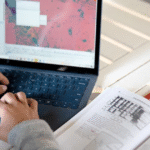Plastic surgery is a type of surgery that changes, rebuilds, and fixes how our bodies look and work. It’s about shaping and fixing the body. It’s a field that’s always changing and demanding, as it deals with many parts of our body. This includes fixing things we’re born with (like birth defects), fighting cancer, helping after accidents, and even from getting older.
Key Takeaways
- Plastic surgery is a diverse surgical specialty that encompasses both reconstructive and cosmetic procedures.
- Plastic surgeons collaborate with various medical specialties to address a wide range of conditions affecting the body’s form and function.
- Plastic surgery techniques include endoscopic surgery, flap surgery, laser technology, skin grafts, and tissue expansion.
- Cosmetic plastic surgery focuses on enhancing a patient’s appearance for aesthetic reasons, such as facial rejuvenation, breast augmentation, and body contouring.
- Reconstructive plastic surgery aims to restore normal appearance and function, often in cases of cancer, trauma, or congenital deformities.
Understanding the Scope of Plastic Surgery
Plastic surgery covers both reconstructive and cosmetic procedures. Reconstructive surgery helps restore the body’s appearance and function. It often deals with congenital anomalies, cancer, trauma, and degenerative conditions. In contrast, cosmetic surgery aims to improve the patient’s look for beauty reasons.
Reconstructive and Cosmetic Procedures
Plastic surgeons do many reconstructive procedures to fix any anomaly or defect. They work to restore both form and function. This can include fixing birth defects, treating cancer effects, or dealing with injuries and diseases.
Collaboration with Other Medical Specialties
For top-notch care, plastic surgeons team up with experts from various fields. These may include general surgery, gynecology, neurosurgery, ophthalmology, oral surgery, orthopedic surgery, otolaryngology, and urology. Working together, they make sure patients get all-around treatment. This covers both the reconstructive and cosmetic parts of their health.
Plastic Surgery Techniques
Plastic surgery uses many techniques to change, fix, and rebuild the body. Surgeons can do anything from small operations to big surgeries. They use new methods to solve different problems and help their patients get better.
Endoscopic Surgery
In endoscopic surgery, a small camera and tools go through tiny cuts. This way, surgeries leave less visible scars than open surgery. It’s great for face surgeries because it keeps you looking as natural as possible.
Flap Surgery
Flap surgery moves healthy tissue to places in need. It is often used in making new breasts after cancer or fixing injury marks. This way, the results look and work like natural skin and body parts.
Laser Technology
Laser techniques have changed plastic surgery by making operations less messy and visible. Surgeons can now use lasers for many things like removing scars and treating skin issues. The precise lasers are now a key tool for surgeons.
Skin Grafts
Skin grafts are important in treating burns and fixing big injuries. The surgery takes skin from one place and puts it where it’s needed. This helps the body heal properly.
Tissue Expansion
Tissue expansion is used to make more skin, fat, or muscle before a big surgery. Surgeons put in a special kind of balloon that they fill slowly. This makes it easier to fix areas that need more skin, making surgeries look less visible.
Cosmetic Plastic Surgery
Plastic surgery focuses on both reconstructive procedures and cosmetic or aesthetic plastic surgery. Aesthetic plastic surgery aims to boost a patient’s appearance. It helps improve self-confidence and overall happiness.
Facial Rejuvenation
Facial rejuvenation is a key area in cosmetic surgery. It includes facelifts, rhinoplasty, and blepharoplasty. These procedures fight signs of age and fix facial structure, giving a more harmonious look.
Breast Augmentation and Mastopexy
Many seek breast augmentation and mastopexy. These surgeries enhance breast size, shape, and look. They help patients feel more confident about their appearance.
Body Contouring
Body contouring includes abdominoplasty and liposuction. These procedures help shape the body by removing fat and skin. They are for areas that do not improve with just diet and exercise.
Surgery and procedures like injectable fillers and neurotoxins are common. For example, Botox helps smooth wrinkles and make facial features better. It allows for a younger look without major surgery.
Plastic Surgery for Congenital Deformities
Plastic surgeons are key in treating congenital deformities. They often help children with a cleft lip and palate. This condition is seen in around one in 700 kids. The process can involve multiple surgeries, including primary and redo rhinoplasties, to make the affected area look and work normally again.
Cleft Lip and Palate Surgery
Cleft lip and palate are problems that happen before birth. The face doesn’t form right during pregnancy. Plastic surgeons team up with speech therapists and orthodontists to help. They aim to make the area look and work as it should.
Craniofacial Surgery
Craniofacial surgery deals with head and face issues from birth. This includes early closure of skull bones. Plastic surgeons help fix these issues over time. Their goal is to improve how the area looks and works.
Reconstructive Plastic Surgery
Reconstructive plastic surgery aims to make the body look and work normally again. It’s used after cancer, injuries, or birth defects. Many different surgeries are done to fix and rebuild parts of the body.
Breast Reconstruction
After a mastectomy, patients might choose to rebuild their breast. There are two common ways this is done. Surgeons might use implants. Or they might take tissue from the patient’s own body to make a new breast.
Head and Neck Reconstruction
In the head and neck area, surgery can fix problems from cancer or accidents. Surgeons often use microvascular techniques. This means moving healthy tissue from one spot to another to repair the area.
Lower Extremity Reconstruction
Serious leg injuries or conditions can be treated by plastic surgeons. They use several methods, like transferring tissue, to make legs look and work better.
Plastic Surgery for Trauma and Injuries

Plastic surgeons have a crucial part in fixing traumatic injuries. They help restore the look and use of body parts. This is often seen in procedures like hand and upper extremity surgery. They take care of adults and children with hand or arm problems from injuries or birth. They help people with hands that aren’t shaped right, due to many reasons.
Hand and Upper Extremity Surgery
Bony fixation and repairing soft tissues is common here. In some cases, they might reattach parts of the hand or arm, a process called replantation. Plastic surgeons often fix nerves and tendons too. This helps people feel and use their hands and arms better.
Burn Reconstruction
In treating burns, plastic surgeons are key as well. They use several methods to make the skin look and work better after a burn. This might involve skin grafts, flaps, and microsurgical techniques. Such methods bring long-lasting and good-looking outcomes.
Plastic Surgery for Cancer Treatment
Plastic surgeons are key in cancer care. They help with reconstruction and managing related problems.
In treating breast cancer, they work with oncologic surgeons. Together, they offer surgery to rebuild the breast. You can choose implants or your own tissue. This helps patients look and feel better after a mastectomy.
Oncologic Reconstruction
Plastic surgery is vital for fixing areas after cancer treatment. For head and neck cancer, they rebuild structures using advanced methods. These include free tissue transfer for better appearance and use.
Lymphedema Treatment
Plastic surgeons are important in lymphedema care. This condition can happen after breast or head and neck cancer treatments. They do surgeries that help with lymph flow. This makes the patient’s life better.
Plastic Surgery and Microsurgery
Microsurgery is key in plastic surgery. It involves using magnification to carefully reconnect tiny blood vessels, nerves, and lymphatics. These techniques help especially in cases of reconstruction after cancer or trauma.
Free Tissue Transfer
In plastic surgery, free tissue transfer is vital for fixing problems from cancer or trauma. In this method, a surgeon takes a part of healthy tissue with its blood vessels and nerves from one part and attaches it to another. This helps restore both form and function.
Nerve Repair and Reanimation
Aside from free tissue transfer, plastic surgeons use microsurgical skills for nerve repair and nerve reanimation. They can reconnect cut nerves or move them to fix paralyzed muscles. This can bring back sensation, movement, and function in patients with trauma or nerve deficits.
Advanced microsurgery in plastic surgery needs high technical know-how and special training. It lets plastic surgeons face tough reconstructive issues and help their patients greatly.
Plastic Surgery Specialties

Plastic surgery has many branches, each with its own focus. Some areas include aesthetic plastic surgery, craniofacial plastic surgery, and gender-affirming surgery. They address various patient needs and conditions.
Aesthetic Plastic Surgery
Aesthetic plastic surgery is all about making patients look better. Surgeons do procedures like facelifts and rhinoplasty to improve faces. They also do breast augmentations and liposuction to change body shapes.
The goal of these surgeries is to look natural and boost self-esteem. They help with confidence and fix the looks people may not like.
Craniofacial Plastic Surgery
This kind of surgery focuses on fixing heads and necks. Surgeons treat issues like cleft lip and palate, which are present at birth. They also handle other head and neck problems. A team of experts work together to make patients look and feel better.
Gender-Affirming Surgery
Gender-affirming surgery helps people transition to their identified gender. Surgeons do procedures like breast augmentation and chest reconstruction. They also do surgeries to change genitals and the face to fit a patient’s gender.
This type of surgery is key for people who want their outside to match how they feel inside. Surgeons help them become more comfortable with their gender.
Board Certification and Training in Plastic Surgery

Plastic surgery is a field that demands a lot of training and board certification. In the US, after med school and a general surgery internship, plastic surgeons go through a 6-year plastic surgery residency program.
The American Board of Plastic Surgery is recognized by the American Board of Medical Specialties. To get board-certified, plastic surgeons do at least 5 years of general surgery, then 6 more years of plastic surgery residency.
For specialized training in plastic surgery, many plastic surgeons take on fellowships. They might do more training in craniofacial surgery, hand surgery, or breast reconstruction. These fellowships make plastic surgeons even more qualified.
Training and board certification standards are strict for plastic surgeons. They ensure the best care for patients. Patients can trust they’re in good hands with these experts.
Plastic Surgery Procedures and Techniques
Plastic surgery includes many methods. These range from using implants and fillers to minimally invasive procedures. Then there are surgical incisions and approaches. With these methods, plastic surgeons can change, fix, and return the body to its normal look and function.
Implants and Fillers
Breast implants and injectables such as dermal fillers are common. They help enhance our looks and deal with aging signs. Procedures like breast augmentation and breast lift use saline or silicone implants. This creates a better breast shape and size. Fillers can also reduce wrinkles, make lips fuller, and add face volume.
Minimally Invasive Procedures
Endoscopic surgery and other small-cut methods are more approved of. They need tiny cuts and heal faster. Procedures like liposuction, tissue expansion, and flap surgery can be done. These leave little to no scars.
Surgical Incisions and Approaches
Plastic surgeons choose from many ways to cut and get to body areas. They do this to fix different problems. Methods like skin grafts and microsurgical anastomosis are for big fixes. The choice of method depends on the patient’s special needs and body shape.
Also Read: Comprehensive Healthcare Tips for Your Family
Conclusion
This overview showed the wide world of plastic surgery. It shared how plastic surgeons help people through reconstructive procedures and cosmetic procedures. They use many techniques to make the body look and work better.
In the realm of plastic surgery, there are many specialties. Some focus on making faces and bodies look younger, while others fix birth issues. Some also offer surgeries to help transgender people. Becoming a plastic surgeon takes a lot of training and board certification. This is to make sure they are the best for their patients.
Plastic surgery is always growing and finding new ways to help people. It uses the latest tech and skills to improve life for their patients. This look at plastic surgery shows just how much it can do and how it transforms lives.
FAQs
Q: What is plastic surgery?
A: Plastic surgery is a surgical specialty that aims to reshape or enhance a person’s appearance through surgical and nonsurgical procedures. It includes cosmetic surgery and plastic and reconstructive surgery.
Q: What are the different types of plastic surgery?
A: Plastic surgery includes procedures such as breast surgery, tummy tuck, eyelid surgery, buttock augmentation, scar revision, and more. These procedures can target various areas of the body to improve aesthetics or function.
Q: What is the difference between cosmetic surgery and plastic and reconstructive surgery?
A: Cosmetic surgery focuses on enhancing appearance, while plastic and reconstructive surgery includes procedures to reconstruct defects caused by birth disorders, trauma, disease, or previous surgeries.
Q: Who can perform plastic surgery?
A: Plastic surgery procedures are typically performed by board-certified plastic surgeons who have undergone specialized training and have expertise in both cosmetic and reconstructive surgical techniques.
Q: What is a plastic surgeon’s role in a multidisciplinary team?
A: Plastic surgeons often collaborate with other medical specialists such as maxillofacial surgeons, pediatric plastic surgeons, and dermatologists in multidisciplinary teams to provide comprehensive care for patients requiring complex treatments.
Q: What are some common plastic surgery procedures?
A: Common plastic surgery procedures include breast reduction, facelifts, liposuction, rhinoplasty (nose surgery), and cleft palate repair, among others. These procedures can address issues such as excess skin, fat, or scarring.
Q: How can I ensure the quality of a plastic surgery procedure?
A: To ensure the quality of a plastic surgery procedure, it is recommended to choose a board-certified plastic surgeon who operates in a reputable medical center and is a member of professional organizations like the American Society of Plastic Surgeons (ASPS).




